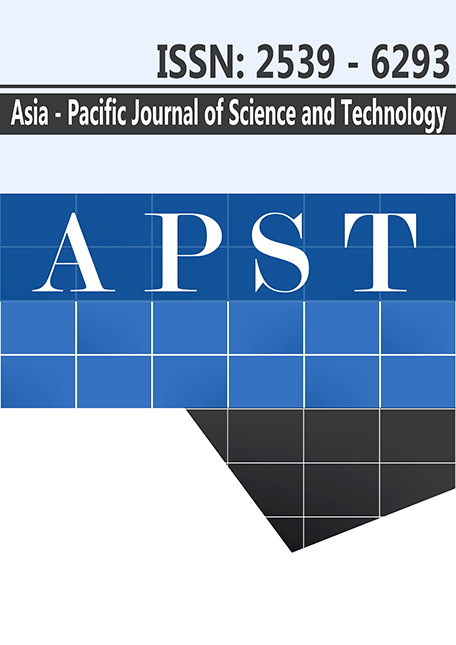Reasons for non-exclusive breastfeeding during the first six months: a five-year study of exclusive breastfeeding promotion in a tertiary care center in Thailand
Main Article Content
Abstract
This study aimed to identify the rate of exclusivebreastfeeding in the Srinagarind Hospital during the five years from 2011-2015 and details the reasons for non-exclusive breastfeeding during the first six months after birth. A retrospective descriptive study was conducted involving 9165 mother-infant pairs attending a breastfeeding clinic between January 1, 2011 and December 31, 2015. The relevant data were collected from the breastfeeding records including the main reasons for non-exclusive breastfeeding, types of feeding after discontinuation of breastfeeding, and feeding status at the first two weeks, two, four and six months postpartum. The rates of exclusive breastfeeding at the six months were 44.89%, 47.55%, 51.34%, 45.34% and 52.49% from 2011-2015, respectively. The three most common reasons in the first two-week period were low milk quantity (55.67%), tried for breastfeeding (26.57%), and alternate methods of feeding (milk or water; 15.91%). At two months. Infant feeding difficulty and mother-infant separation were the two most common reasons at two months (37.96% and 36.67%, retrospectively). At six months, mother-infant separation was the most common reason (36.98%) and an alternate feeding method was the second most common reason (30%). Breastfeeding with infant formula was the most common type of non-exclusive breastfeeding at two weeks, two months, and four months (80%, 70%, and 39.9%, respectively). In conclusion, during the first two months postpartum, attention should be focused on infant feeding and mother-infant separation. From two to six months postpartum, we should focus on low milk quantity, mother-infant separation, and alternate feeding methods.
Article Details
References
K., Kramer, M.S., Martin, R.M., 2014. Cohort profile: The promotion of breastfeeding intervention trial
(PROBIT). International Journal of Epidemiology 43, 679–690.
[2] Edmond, K.M., Zandoh, C., Quigley, M.A., Amenga-Etego, S., Owusu-Agyei, S., Kirkwood, B.R., 2006.
Delayed breastfeeding initiation increases risk of neonatal mortality. Pediatrics 117, e380-386.
[3] Lauer, J.A., Betrán, A.P., Barros, A.J.D., de Onís, M., 2006. Deaths and years of life lost due to suboptimal
breast-feeding among children in the developing world: a global ecological risk assessment. Public Health
Nutrition 9, 673–685.
[4] World Health Organization. Global targets, 2025., To improve maternal, infant and young child nutrition.
[WWW Document].URL www.who.int/nutrition/topics/ nutrition_globaltargets2025/en. (accessed 6. 10.
14)
[5] World Health Organization. World health statistics 2014., Geneva: WHO. [WWW Document].URL
https://www.who.int/about/licensing/copyright_form/en/index
[6] Stuebe, A., 2009. The risks of not breastfeeding for mothers and infants. Rev Obstet Gynecol. 2, 222-231.
[7] Division of Nutrition, Physical Activity, and Obesity, National Center for Chronic Disease Prevention and
Health Promotion, Centers for Disease Control and Prevention. Breastfeeding Report Cards., United states,
2016 [WWW Document].URL https://www.cdc.gov/breastfeeding/data/reportcard.htm
[8] Alzaheb, R.A., 2017. Factors Influencing Exclusive Breastfeeding in Tabuk, Saudi Arabia. Clinical
Medicine Insights: Pediatrics 11, 1179556517698136.
[9] Inoue, M., Binns, C.W., Otsuka, K., Jimba, M., Matsubara, M., 2012. Infant feeding practices and
breastfeeding duration in Japan: A review. International Breastfeeding Journal 7, 15.
[10] Hangchaovanich, Y., Voramongkol, N., 2006. Breastfeeding promotion in Thailand. Journal of the Medical
Association of Thailand = Chotmaihet thangphaet 89 Suppl 4, S173-177.
[11] Wagner, E.A., Chantry, C.J., Dewey, K.G., Nommsen-Rivers, L.A., 2013. Breastfeeding concerns at 3 and
7 days postpartum and feeding status at 2 months. Pediatrics 132, e865-875.


